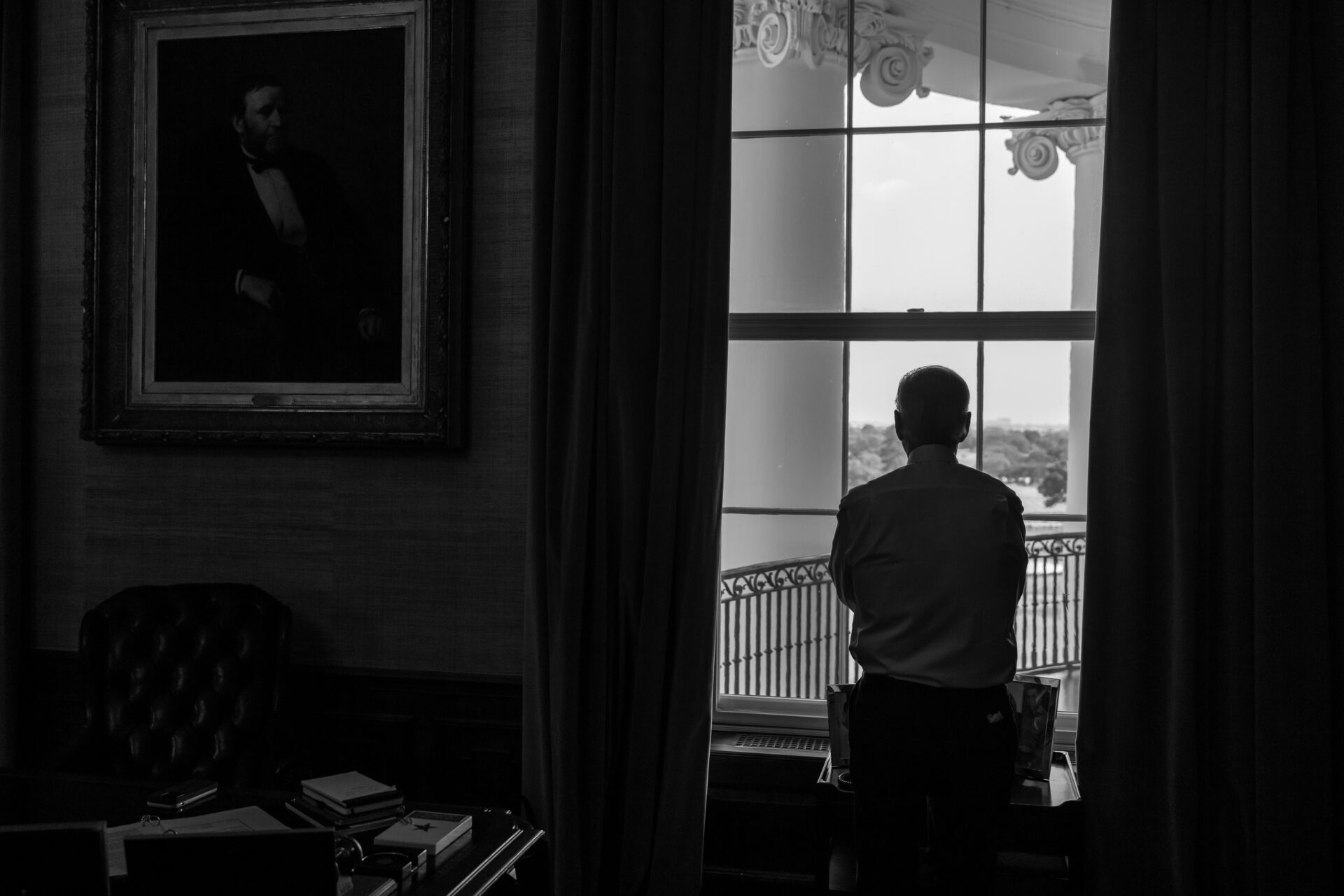A few years ago, I was reading through Canadian government documents on 1980s tank procurement when I came across an annotation that I’ve never forgotten — the product of a rather sassy foreign policy officer named J.H. Taylor. “I hope the tanks,” he wrote, “will do as much damage to the enemy as the Department of National Defence is doing to the English Language!”
While it wasn’t exactly “Truth is the first casualty of war,” Taylor’s observation haunted me throughout my subsequent study of Canadian military export policy as I cataloged how creative usage of dichotomies such as offensive/defensive, military/demilitarized, and ally/enemy were used to create “restrictions” that eroded existing controls. I couldn’t shake the impression that the definitional games, categorical ambiguities, and convenient exceptions written into Canadian policy had been weaponized against its public purpose.
However, Canada has not been playing these language games alone. Since moving to Washington, DC earlier this year, I’ve begun comparing the Canadian and US records on military exports and human rights, especially regarding Saudi Arabia. Both countries have shown a collective willingness to reap the public benefits of announcing human rights restrictions and a collective reticence to enforce them when politically or economically inconvenient. Both countries have also leveraged frothy rhetoric to hide the gap.
Preaching About Rights, But Selling Arms
Canada and the United States began including human rights restrictions on military export policy in the 1970s. In the United States, the excesses of the Nixon administration drove Congress to impose more oversight through amendments to the Foreign Assistance Act (FAA) in 1974 and the passage of the Arms Export Control Act in 1976. President Jimmy Carter released the first public US Conventional Arms Transfer policy statement in 1977 as part of a larger effort to halt an astronomical rise in US arms sales. As he famously (and repeatedly) declared, the United States “cannot be both the world’s leading champion of peace and the world’s leading supplier of weapons of war.”
There is little evidence in either Canada or the United States that the risk of human rights violations has impacted government assessments of arms sales except in extraordinary circumstances. As in other arms trading democracies, military export controls invoke a mythos that serves as a “legitimating function” for controversial transfers.
A year later, the Canadian government declared that Canada refused to export arms “to regimes considered wholly repugnant to Canadian values.” This was apparently “especially true” in cases where the arms might be used against civilians. Yet, over the next eight years, not a single country was so designated. Instead, in 1986 the government decided to revise the policy by prohibiting the export of military equipment “to countries whose governments have a persistent record of serious violations of the human rights of their citizens, unless it can be demonstrated that there is no reasonable risk that the goods might be used against the civilian population” [emphasis added]. It was this loophole that was used to justify the first major sale of Canadian armored vehicles to Saudi Arabia in 1991 after a prolonged parliamentary debate. Since armored vehicles couldn’t be used to conduct judicial amputations or floggings, Parliament decided the risk was unreasonable, and the sale could proceed.
In 2018, Canada amended its Export and Import Permits Act as it prepared to accede to the Arms Trade Treaty. The amendment mandated that the Canadian Minister of Foreign Affairs “must deny” export licenses for military goods and technology if there is a “substantial risk” that the export might undermine peace and security, violate international humanitarian or human rights law, or be used in serious acts of gender-based violence. This language aligned with an emerging Canadian commitment to a “feminist foreign policy,” as well as a historical emphasis on human rights evangelism.
However, the pretty policy continues to hide ugly practices. Since 2017, the vast majority of Canada’s military exports to non-US destinations have gone to Saudi Arabia — a stark violation of Canadian military export policy and its commitment to the ATT. Under significant public pressure, the Canadian government finally published an internal report that admitted that Saudi Arabia was committing serious violations of international humanitarian law and human rights law but concluded that there was no “substantial risk” that the specific equipment being supplied by Canada would aid these violations. In doing so, it did irreparable damage to the definition of “substantial risk,” reducing the term to a rhetorical chew toy masquerading as a responsible restriction. Unless the Saudis release evidence of a LAV burning down an orphanage or executing prisoners of war, the Canadian government’s selectively restrictive “substantial risk” criteria seem unlikely to be triggered.
Earlier this year, President Joe Biden released a new Conventional Arms Transfer policy, the sixth iteration since Carter’s original. The update mentions the phrase “human rights” sixteen times and incorporates long lists of risk-assessment criteria (including international humanitarian law and gender-based criteria). It also lowers the alleged standard used to prohibit a sale from “actual knowledge at the time of authorization” that a transfer will be used to commit war crimes or atrocities to a simple balance of probabilities. In theory, this change substantially relaxes the evidentiary threshold for refusing arms sales to dictators, human rights abusers, and other unsavory customers.
Yet, a policy-praxis gap persists. The United States now accounts for about 40% of the global arms exports market, with 19% of that share constituting transfers to Saudi Arabia. Even during the height of the conflict in Yemen, US arms continued to flow to Saudi despite allegations of war crimes and other atrocities. While promising a departure from President Donald Trump’s rather mercenary commitment to the economic benefit of arms sales, the White House has continued a troubling pattern of approving military sales to autocratic regimes, including Saudi Arabia, the United Arab Emirates, Egypt, Turkey, and Pakistan.
When Risk Factors Don’t Seem to Matter
There is little evidence in either Canada or the United States that the risk of human rights violations has impacted government assessments of arms sales except in extraordinary circumstances. As in other arms trading democracies, military export controls invoke a mythos that serves as a “legitimating function” for controversial transfers. In other words, a protective layer of frothy rhetoric defuses or confuses public condemnation — a layer which, like Biden’s 2023 Conventional Arms Transfer policy, seems to get larger and foamier with every pour.
Granted, pointing out that public-facing justifications for the arms trade weaponize euphemism and jargon for political gain is not a new insight. It’s almost redundant to note, for example, that in 2021 the White House placed a temporary hold on the sale of “offensive” weapons to Saudi Arabia despite the fact that the munitions in question (precision-guided bombs) are generally referred to as “defense equipment” in Foreign Military Sales or FMS notifications. Or that such notifications inevitably claim that the sale “will not alter the basic military balance in the region,” no matter the weapon or value involved. Or that the State Department’s own reporting indicates that many recipients of US Conventional Arms Transfer transfers have engaged in a “consistent pattern of gross violations” of human rights, thereby breaching Section 502B of the Foreign Assistance Act.
Thankfully, it seems that leveraging definition ambiguity to evade unprecedented public condemnation is becoming an increasingly costly strategy. Ottawa actually canceled a series of military export sales to Turkey in 2021 after it was discovered that previous Canadian exports had been diverted to Azerbaijan. Unprecedented public disapproval surrounding the war in Yemen has changed the congressional calculus on arms sales, incentivizing a series of challenges to the status quo.
Yet, these challenges generally avoid bright lines that would place meaningful constraints upon US military exports, instead preferring to throw endless reams of human rights reporting into the gears of the machine. While such reports can be politically embarrassing, they have generally failed both to prevent billions in military exports from both Canada and the United States to Saudi Arabia — and to provide a permanent solution to the discretionary flexibility of military export approvals. Until human rights restrictions in Conventional Arms Transfer policy are matched by hard limits on the type and destination of arms transfers, they will remain conveniently susceptible to rhetorical gymnastics and definitional obfuscation, damaging our credibility, our sense of moral superiority, and maybe even our language itself.





















